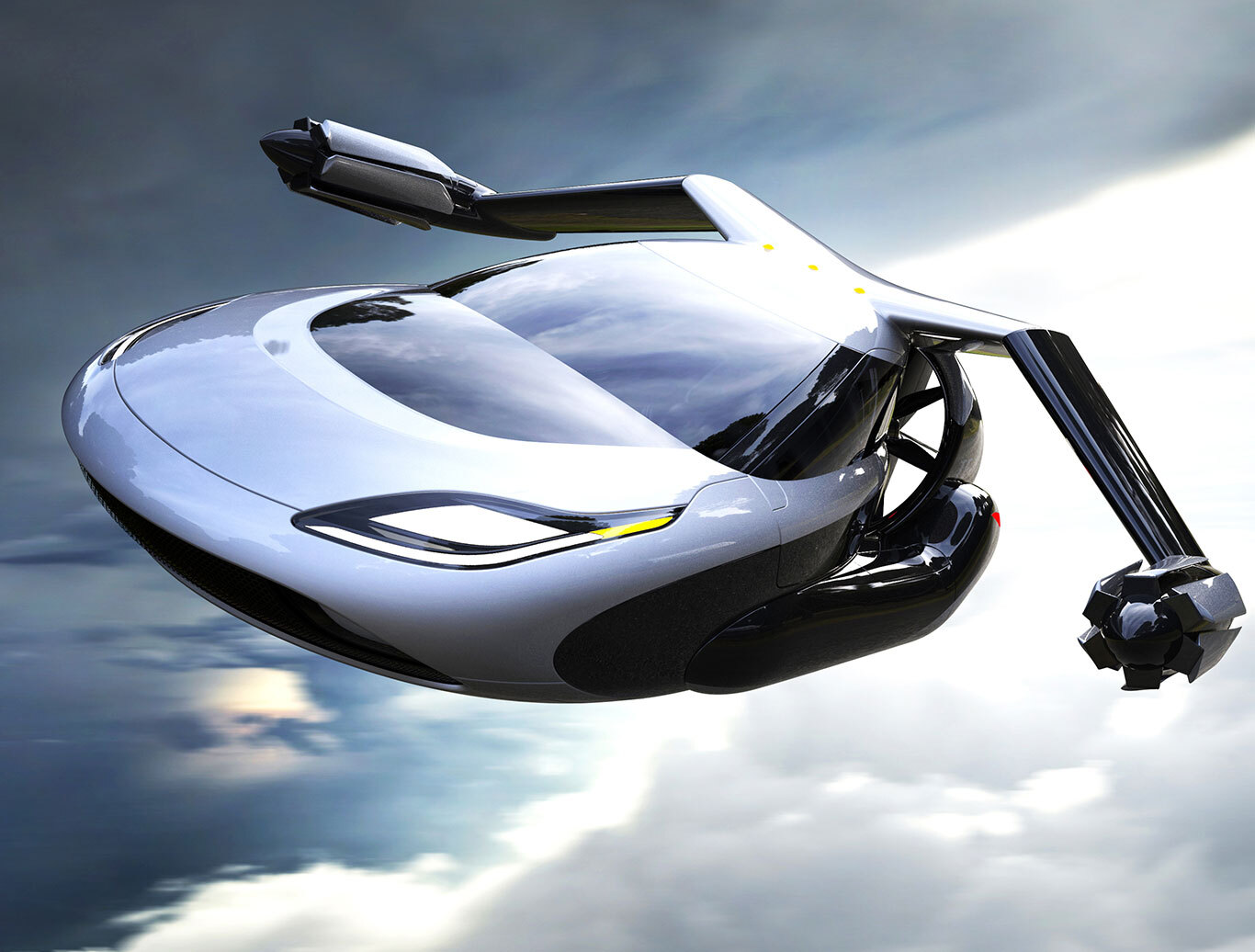
Imagine a world where your daily commute no longer means sitting in bumper-to-bumper traffic. Where you could simply l...
Related Blogs
Flying cars are here
15 minutes, 25 seconds
-21 Views 0 Comments 0 Likes 0 Reviews

Flying Cars: The Future of Transportation Taking Flight
Imagine a world where your daily commute no longer means sitting in bumper-to-bumper traffic. Where you could simply lift off and glide above the snarl of roads below. This vision of personal aerial transportation, once just a dream from science fiction stories, is swiftly becoming a real possibility. For decades, we've been captivated by the idea of flying cars, seeing them in movies and cartoons. Now, incredible leaps in technology are finally bringing this exciting future much closer to widespread use.
What exactly do we mean by a "flying car"? Often, it's a mix of a car and an aircraft, sometimes called a Personal Aerial Vehicle (PAV). These machines promise to travel both on the road and through the air. This shift could completely change how we move around cities, cutting down on heavy traffic and making travel much faster and smoother for everyone.
The Evolution of the Flying Car Dream
Early Concepts and Inspirations
The idea of cars taking to the sky has sparked imaginations for generations. Who hasn't seen The Jetsons and wished for a floating family vehicle? Or perhaps the gritty, sky-high taxis of Blade Runner captured your mind? These stories showed us what future travel might look like. In the mid-1900s, people actually tried to build personal flying machines. These early attempts often failed, though, mostly because the technology just wasn't ready yet.
Technological Hurdles and Breakthroughs
For a long time, several big problems kept flying cars from getting off the ground. Think about the batteries we use in our phones – they wouldn't power a car, let alone a flying one! Propulsion systems needed more power and less weight. Plus, strict safety rules and the lack of a special air traffic system were huge roadblocks. Today, things are very different. New electric engines are powerful and quiet. Lighter, stronger materials make vehicles safer. Smart navigation systems help pilots, or even computers, guide these machines with amazing accuracy. These breakthroughs are making true aerial vehicles possible.
Key Players and Current Development
Today, many smart companies are pouring money and effort into making flying cars real. You might hear names like Joby Aviation or Archer Aviation, who are working on special electric Vertical Take-Off and Landing (eVTOL) aircraft. Lilium, another big player, is designing jets that promise fast, regional air travel. Even big car brands like Hyundai have their own advanced air mobility division, Supernal. These companies aren't just dreaming; they're building and testing actual prototypes right now, getting them ready for a future where we fly instead of drive.
How Flying Cars Work: Engineering the Aerial Revolution
Electric Vertical Take-Off and Landing (eVTOL)
Most of today's flying cars use a cool technology called Electric Vertical Take-Off and Landing, or eVTOL. Picture it: instead of long runways, these vehicles lift straight up into the air, just like a helicopter. They use electric motors, often powering many small fans or tilting rotors. The biggest perks of electric power are clear. These machines run quietly, create zero air pollution, and cost less to fuel than traditional aircraft. It's a clean, efficient way to get airborne.
Hybrid and Advanced Propulsion
While eVTOL is leading the way, engineers are always exploring other ways to power these vehicles. Some might use hybrid systems, mixing electric motors with small fuel engines. This could offer longer flying ranges, which is handy for trips beyond city limits. Other designs are looking into brand-new propulsion ideas that could make flying even faster or more efficient in the future. The goal is always more power, less weight, and safer flight.
Design and Aerodynamics
From Roadable Aircraft to Dedicated Air Vehicles
When we say "flying car," what do you picture? Some designs are true "roadable aircraft." This means they can drive like a regular car on the street and then transform to fly in the air. Other designs are mostly for flying, often called eVTOLs. They might taxi on the ground but aren't meant for long road trips. Both types need clever engineering. They must be sleek enough to fly well, but sturdy enough to handle ground travel. It's a tricky balance to make them stable in the air and safe on the road.
Safety Features and Redundancy
Safety is the top concern for anyone building a flying vehicle. These machines often have backup systems for almost everything. Think about it: if one motor fails, another one kicks in. Many also carry big parachutes that can safely bring the entire craft down if something goes wrong. Plus, they use super smart flight control software to help keep them stable. Advanced sensors constantly watch for other aircraft or obstacles, helping to prevent crashes before they even happen.
Navigating the Skies: Infrastructure and Regulation
Air Traffic Management for the Masses
Imagine hundreds, or even thousands, of flying cars buzzing around a city. How would we keep track of them all? It's a big puzzle to fit so many new vehicles into our already busy airspace. That's why experts are creating new systems called Unmanned Traffic Management (UTM). These systems will use computers and smart technology to guide low-flying aircraft. They'll make sure everyone has a clear path and stays safe.
Vertiports and Take-Off/Landing Zones
Just as we have airports for planes, we'll need special places for flying cars. These hubs are called "vertiports." Think of them as futuristic bus stops, but for flying vehicles. Vertiports will be where people get on and off, where the vehicles charge their batteries, and where they take off and land. Planning these in busy city and quiet suburban areas needs a lot of thought. We need enough space and the right setup to handle many flights each day.
Regulatory Frameworks and Certification
Aviation Authority Approvals
Before any flying car can carry passengers, it must get a big stamp of approval from aviation experts. Agencies like the FAA in the United States or EASA in Europe have very strict rules. They check everything from the design of the aircraft to how it will be maintained and operated. This process is tough, but it ensures these new vehicles are incredibly safe.
Pilot Licensing and Training
Who gets to fly these future vehicles? Right now, a pilot will likely need a special license, just like a helicopter pilot. They'll go through tough training programs to learn how to handle these unique machines. As technology gets better, though, we might see more self-flying systems. Maybe eventually, flying cars will mostly pilot themselves, with humans just overseeing the journey.
The Impact of Flying Cars on Society and the Economy
Transforming Urban Mobility
Alleviating Traffic Congestion
One of the biggest promises of flying cars is to make city traffic a thing of the past. Imagine a world where fewer cars jam our roads. Flying vehicles offer a whole new way to travel – a third dimension above our streets. What now takes an hour to drive might take just minutes by air. This could drastically cut down commute times and even free up space on the ground for parks or other uses.
New Mobility Services and Business Models
Flying cars will also open up many new ways to get around. Think about air taxi services, where you can call a flying car to pick you up on demand. They could also respond to emergencies much faster, helping people in trouble. And imagine quick deliveries of important goods right to your doorstep, flying over all the ground traffic. It's a whole new world of services waiting to take flight.
Economic and Environmental Considerations
Investment and Market Growth
There's a lot of excitement around flying cars, and smart investors are putting billions of dollars into this new field. Everyone sees the huge potential. Experts predict this market will grow incredibly fast over the next few years. As companies develop better technology and more people become interested, we'll see even more money flow into making these dreams come true.
Environmental Benefits and Challenges
Electric flying cars bring some great environmental perks. Because they run on electricity, they create no tailpipe emissions. This means cleaner air in our cities. They're also much quieter than helicopters, which helps reduce noise pollution. However, making and charging all these vehicles will require a lot of energy. We'll need to make sure that energy comes from clean sources to truly make them eco-friendly.
The Road Ahead: Challenges and Opportunities
Overcoming Adoption Hurdles
Public Perception and Acceptance
For flying cars to truly take off, people need to feel good about them. Folks might worry about how safe they are, if they'll be too noisy, or if our skies will be filled with flying vehicles. Building trust is key. People need to see that these vehicles are rigorously tested and tightly regulated. Showing how they can make life better, not just different, will help win over public opinion.
Affordability and Accessibility
Right now, developing and building flying cars costs a lot of money. This means the first models will likely be very expensive, probably for high-end services or wealthy individuals. But as technology improves and more companies join in, prices should come down. Eventually, we hope to see flying cars or air taxi services become affordable enough for many people to use, making them a common part of our daily travel.
The Future of Personal Aerial Mobility
Integration with Existing Transport Networks
Flying cars won't replace all other forms of transport. Instead, they'll likely work together with them. Imagine flying into a city vertiport, then easily hopping onto a train, bus, or shared ride to reach your final stop. They'll become another choice in our travel toolbox, connecting smoothly with public transport and ride-sharing services. It's about creating a smarter, more connected way to get around.
Autonomous Flight and the Passenger Experience
Looking further ahead, imagine stepping into a flying car that pilots itself. Artificial intelligence and advanced computer systems will handle the flying, making it super smooth and safe. Passengers could simply relax, read, or enjoy the view from above. The trip would be quick, quiet, and perhaps even breathtaking, offering a whole new way to experience travel and our cities.
Conclusion: The Sky's No Longer the Limit
Flying cars are quickly moving from science fiction to our skies. We've seen how advancements in electric propulsion and smart design are making these aerial vehicles possible. While hurdles like air traffic management and public acceptance still need addressing, the potential benefits are huge. Soon, the way we travel might change forever. The promise of faster, cleaner, and less congested commutes is within our grasp. Get ready; a new era of personal flight is not just coming, it's already here.
Photos

